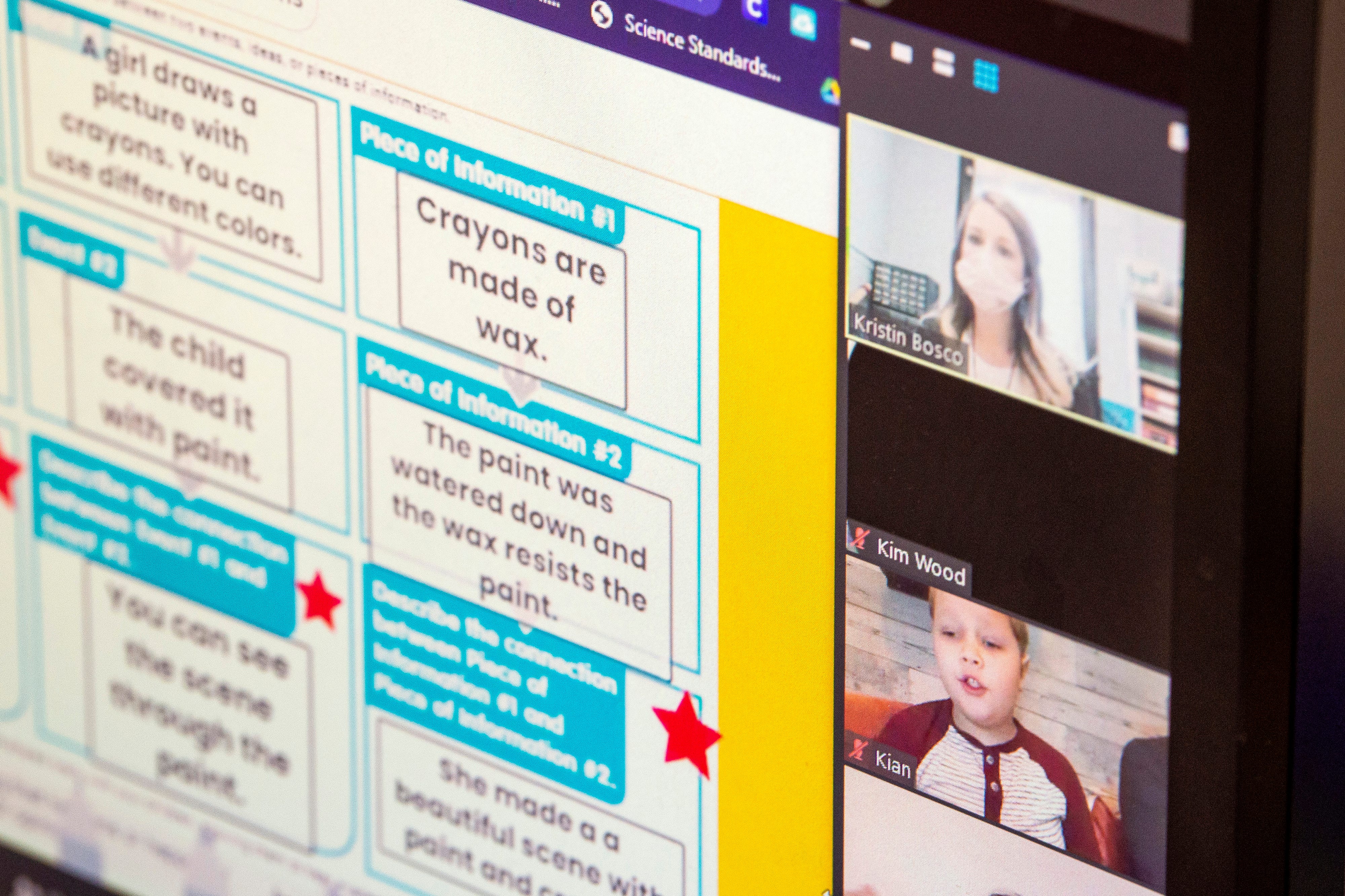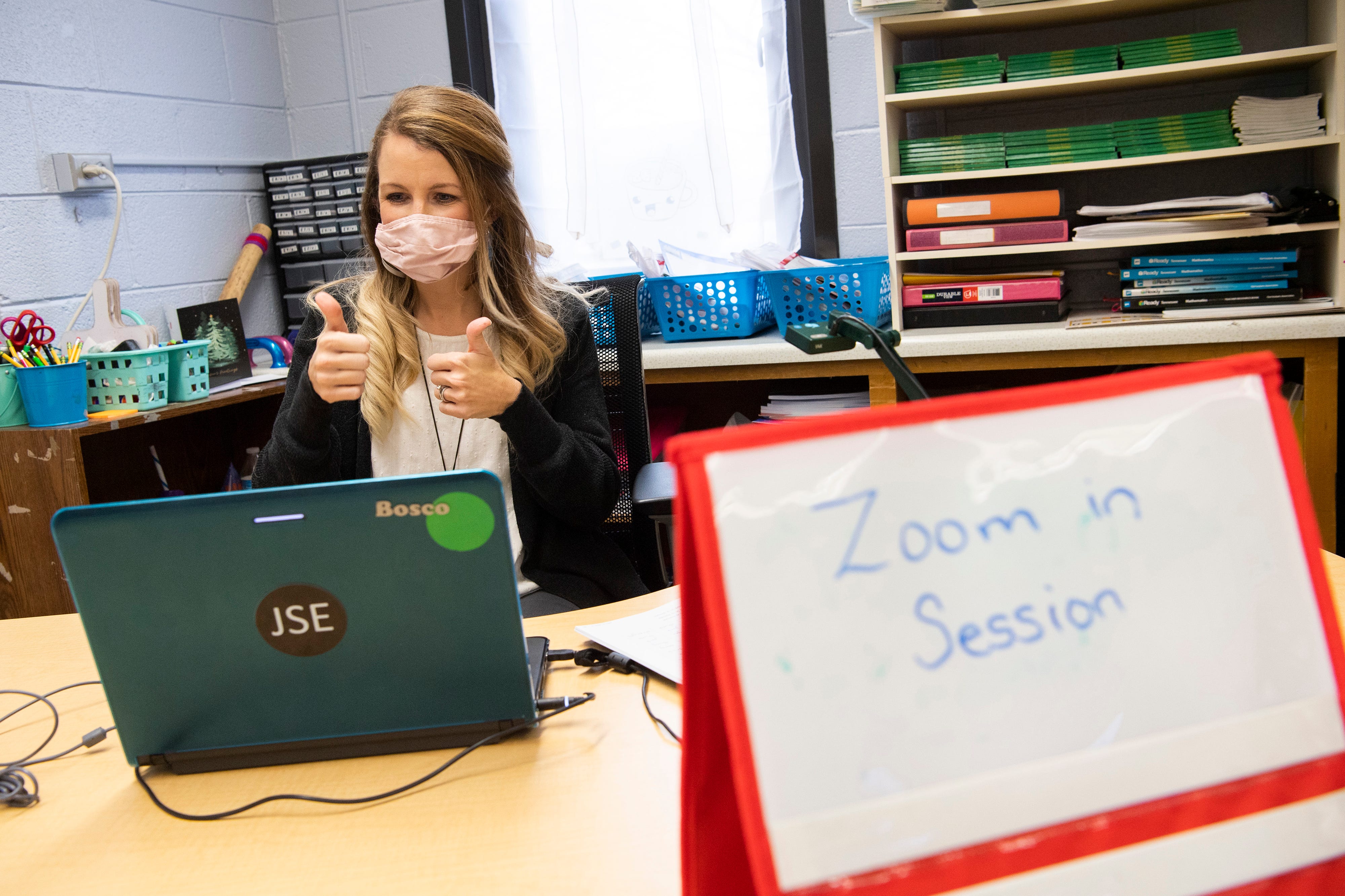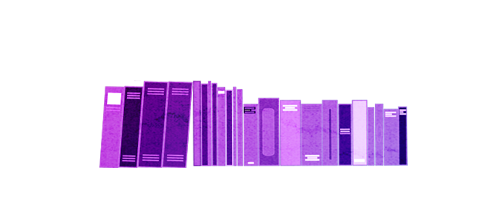Reading brings out the competitor in 8-year-old Uriah Hargrave. The second-grader at Eaton Park Elementary in Vermilion Parish along Louisiana's southwest coast was thrilled to return to in-person learning in January. One of his favorite things is the Accelerated Reader program in which he wins points for the books he reads.
"I like to read because I like to take AR," Uriah said. "You get more (points and prizes) every time. ... Yesterday I read a big ol' chapter book about animals with kids."
His points pay off in extra free time outside and "Star Bucks" that he can use to buy erasers and spy pens at the school store. Plus, his reading helps advance his class' gingerbread cutout on the Candy Land game bulletin board in the school hallway. He proudly pointed out where his class was in relation to the other second-grade classes.
Yet too many children may be falling behind in the reading game during the pandemic, teachers and experts say. The USA TODAY Network visited a handful of classrooms in different states to see how schools are adapting at a time when the teachers' axiom about students learning to read in early grades so that they can read to learn the rest of their lives has never been put to a greater test.

"Learning to read is so challenging," said Laura Taylor, a professor of educational studies at Rhodes College in Memphis, Tennessee. "It’s a long process that takes years."
Lost time from when schools shut down, inconsistent schedules since then, the limitations of teaching over video conference or even in person with masks and social distancing — these handicaps are likely to have a greater effect on children learning to read than those at other grade levels, said Anjenette Holmes, a professor at the University of Louisiana at Lafayette’s Picard Center for Child Development & Lifelong Learning.
“It’s an extra challenge for that age group,” she said.
The pandemic's full effects on learning can't be measured while schools are still coping with these fresh challenges, the experts concede. But early indications hint at just how much ground is being lost during the pandemic, especially among younger grades.


A mid-year report from the DIBELS early reading assessment shows close to half of students in kindergarten and first grade scored within the lowest category in early literacy skills, an increase of almost two-thirds from the same point last year.
The analysis, covering approximately 400,000 students in more than 1,400 schools from 41 states, also shows that compared with last year twice as many Black kindergarten students are at great risk for not learning to read.
COVID redshirting: As millions of kids skip kindergarten, the learning gap widens – and schools may lose funding
In Uriah's district, standardized tests administered at the start of the school year revealed just how much had been lost from shutting down schools in March. Among kindergartners, the tests showed only 47% were at grade level, a drop from 77% the previous year. In first grade, the numbers fell from 90% to 66%. Second graders fell from 81% to 58%. That left educators grappling with how to teach new grade-level concepts when students were still playing catch-up.
Vermilion Parish's answer is for elementary school teachers to integrate skills students missed with "mini lessons" sprinkled throughout the year. For example, when first-graders get to new content that requires knowledge of a kindergarten concept they missed last year, the teacher does a mini lesson before starting the new skill.
At Eaton Park Elementary, teachers have carved out an extra half hour from the school day to devote to reading to help make up for the learning losses.
Phaedra Simon, a single mom of three from Opelousas, Louisiana, can attest to just how challenging it is for kids to learn new material when they're still mastering foundational skills.
Simon worked hard to keep her children — ages 9, 8 and 7 — on track when they started the year virtually like everyone else in the St. Landry Parish school district. She even quit her job to give her youngest the attention he needed.
But as soon as the chance came to return to in-person learning, she seized it, even as she continues to worry about their health. "I'm not trained to teach them how to read," Simon said.
She's continued working with them, reading at home together every night. "I'm still nervous, waiting to see their new report cards," Simon said.
School looks different for kids and parents during the COVID-19 pandemic
Kindergarteners and their parents explain what school is like a year into the COVID-19 pandemic.
USA TODAY

Nearly a year into remote learning, instilling good learning habits remains a daily mission for Pam Bowling, a first grade teacher at Allen Elementary School in eastern Kentucky. She peppers every virtual lesson with positive narration — “Good job! I hear reading books being opened!” — a management technique usually reserved for kids off-task in an actual classroom.
Only now, the 6- and 7-year-olds in Bowling’s class log on from their homes, many still donning pajamas.

“Make sure we're sitting up,” Bowling trilled at the start of her daily 9 a.m. reading session. “I want you to be comfortable, but I don’t want you to be too comfortable, right? We don’t want to fall asleep. We want to make sure we’re sitting up, paying attention, just like we were at school.”
On a mid-February morning, one perched at a desk, another sprawled on a couch, a third sat cross-legged in her bed, a stuffed Olaf, the snowman from the movie "Frozen," at her side.
“I've got ‘em with hair that looks like they've been shot out of a cannon,” joked Bowling, an educator for 25 years. “They're getting up and their hair is every which way. And you can tell they're sleepy.’”
Even for veterans like Bowling, teaching students to read over a video conference call is an unprecedented challenge.
It's particularly hard for teachers right now. I don’t think you can make the same connections, give the same in-the-moment feedback or at least as often as you might be if you had all of your students in a room and you could walk around to them and listen into them reading for a minute or two.
"It's particularly hard for teachers right now," said Taylor, the early learning professor from Rhodes College. "I don’t think you can make the same connections, give the same in-the-moment feedback or at least as often as you might be if you had all of your students in a room."
In Floyd County, a community of about 36,000 in Kentucky’s rural Appalachia region, Bowling’s pleas for focus and participation are motivated by an unsettling reality: Here, poverty rates are high and educational attainment is low. There is no time to waste.
Except for a brief return to in-person classes in the early fall, Bowling, 50, has been teaching from her dining room, a “focus wall” displaying weekly spelling words and reading skills affixed to a wooden hutch behind her seat.
“I was very skeptical (of remote learning),” Bowling recalled. “I said, ‘I don't know how we're gonna read through the camera. I don't know how that's gonna translate.'”
There was no sign of her early skepticism during the class' mid-February lesson as Bowling and her students tackled sight words, spelling with the short “e” and nonfiction reading comprehension. Bowling, who said she can be her own worst-critic, said she tries to remember the setup is only temporary.
“It’s just swallowing the fact that ‘Hey, this is what I've been dealt with,’” she said. “It might not be the best, it may not be the easiest approach, but — and I say this almost every day to my parents and kids — we're just gonna roll with the hand we’re dealt.”
The next day, a brutal snow and ice storm would knock out power for nearly 48 hours. Just a few days after that, another momentous challenge loomed: With little time to prepare, Bowling and her kids would ease back to in-person classes on a hybrid schedule, a litany of health and safety routines now added to her charge.
"We're just gonna roll with it," she said.
WATCH: Three third grade teachers, three perspectives
Third grade teacher talks about challenges during the pandemic
Teacher connects with her students while teaching language arts virtually during COVID
The hybrid schedule and students in the classroom during COVID

When schools shuttered in March, Sydney Tolbert was a preschooler at The Libertas School of Memphis, Tennessee's only public Montessori charter school, and was just making strides in reading, her mother said.
"She was just right there. And then all of a sudden, we just stopped,” recalled Stephanie Tolbert, who felt relief that Libertas wound up being one of the few public schools in Memphis that offered in-person classes beginning in the fall.
“I knew that if we could get her back in school, that she would just take off," Tolbert added. "And you could just see her. I watched her just, like, flourish. It was awesome.”
But in-person learning isn't necessarily a pandemic panacea, especially for youngsters learning to read. In Sydney's multi-grade classroom, teacher Toni Sudduth, a classroom assistant and the 15 students practice social distancing and wear masks even when outside.

Although it helps that the curriculum is individualized for each student, group reading lessons, like reviewing letter sounds, have had to be abbreviated. And it's a challenge for students to be able to watch how their teacher's mouth moves while sounding out letter combinations and words. Sudduth started the year with a face mask with a clear window, but it kept fogging up. She switched to a clear face shield, so she can pull down her mask behind the shield to to demonstrate how the sound is made, then pull her mask up as the class makes the sound together, placing their hands to their throat to feel the sound as well.
Sounding out words is one area where online learning platforms provide an advantage, said Emily Wakabi, a reading interventionist at Libertas. "I used to cue (students) every time, like, 'Watch my mouth,'" she said, "and that's not helpful this year."
Most of Wakabi's work with about 40 children is done in-person, but she meets online with students whose families don't want to take the risk of returning to school. During a virtual session in February with second grader Jada Guy, they worked on blending letter sounds to make words, and learning the new letter sound "ph." The computer froze at one point, and an animated presentation to guide Jada as she pronounced the words lagged behind.
Yet plenty of times Jada demonstrated her excitement over what she was learning, including once after writing down "pamphlet," a new word with the letter sound she'd been practicing.
"Was that fast, Ms. Wakabi?" she asked.
"That was so fast! You are fast," Wakabi said, explaining later that building a student's confidence is a key to reading.
"A lot of times," she said, "kids need the motivation and encouragement to read just as much as they need the skills."


This Zoom meeting featured more personality than you see in the typical office call. A child sipped water too close to the computer. Another yawned, mouth wide open to the screen. A third sat obscured by his pencil box, which was positioned in front of the camera.
Kristin Bosco no longer gets distracted by such sights. The first grade teacher at John Sevier Elementary in Maryville, Tennessee, in the foothills of the Smoky Mountains has 17 students in her virtual class.
She's grown accustomed to it by now, even if it might never feel normal to teach reading over a computer screen. While the children read a passage about a king, seeking words with the "ng" sound, Bosco flipped through her Zoom panel to see each face to make sure everyone paid attention.
Between tasks, the children talk with each other, something Bosco said she believes is important for their social growth. Learning this way has given her a window into the children's home life that she didn't always have. She hears about — and often sees — the children's pets and learns things like when a parent switches jobs.
Conversations like these are an important foundation to literacy, helping children build vocabulary and practice what they're learning on the page.
“Allowing children to talk more is really important," said Holmes from UL Lafayette. "Teachers are trained to get children talking to each other. They’re not learning that original, authentic language otherwise.”
After the class reading, students broke up into groups based on their reading level. Teacher's aide Kim Wood worked with one group, while Bosco stayed with another. Two groups occupied themselves with independent activities. The groups rotate each day.
Bosco worked with two boys who need the most support, taking turns with them reading a digital book about ice cream. One boy, Kian, told his teacher how much he loves ice cream, making a connection between it and the smoothie he has every night.
Kian's mom, Adrienne Schwarte, said virtual learning has allowed her to witness more of the learning process than she might otherwise see. Schwarte, a college professor, and her husband recently added a reading nook to their home to give Kian and his brother opportunities to read.
“We've seen his confidence level really grow with reading," Schwarte added. "I would say Kian was probably a little bit of a slower reader at his grade level at the beginning of the year compared to some of the other students, and he's really picked up over the last three or four months.”


At the start of the school year, third grade teacher Lisa Gemar was asked to be one of 11 virtual teachers needed for children who didn't want in-person learning at Northside Elementary School in the Clinton, Mississippi, school district. It was an adjustment, but she was up to the challenge.
"The expectations are no different," Gemar, a 10-year teaching veteran, said of leading a class in a Zoom session. "I'm still able to pick up on what they're struggling with and we've built a really great relationship even virtually through a screen."
Just like their peers who are learning in-person, the virtual students take weekly assessments so teachers can review what areas students need extra work in. Students who need more help meet daily with an intervention specialist for 30 minutes.
The transition to virtual learning was eased by Clinton's eight-year track record as a one-to-one district, meaning every student gets their own laptop or tablet.
In the Madison County School District north of Jackson, Mississippi, some technology issues have meant more students need additional intervention, said Christyl Erickson, the district's curriculum director.
“Some (students) are coming back that were — unfortunately, because they had no internet and even hotspots that we provided did not help — some of these children were packet learners," Erickson said. "Their parents taught them. Now, we did have very few of those, but that's still a gap we have to close for these kids.”
This isn't a surprise to the experts, who fear the pandemic will only widen achievement gaps.
"Knowing what we know about how education inequity works I would think it’s more likely that we’re going to see larger gaps between schools, between districts, because of those different kinds of financial resources," said Rhodes College's Taylor. "I hope that our national conversation around that is focused on the different types of resources provided to those groups rather than to look at them as individual failings."
If early readers get the resources in time and attention that they need, UL Lafayette's Holmes is optimistic they can overcome the pandemic's challenges.
"Children are strong and can bounce back quickly, sometimes a lot faster than adults," Holmes said. "With consistent routines in place, whether learning at home or at school, I have hope that they will catch up."
Early childhood education coverage at USA TODAY is made possible in part by a grant from Save the Children. Save the Children does not provide editorial input.
"behind" - Google News
March 07, 2021 at 06:00PM
https://ift.tt/2Od8Xcl
Students are struggling to read behind masks and screens during COVID, but ‘expectations are no different’ - USA TODAY
"behind" - Google News
https://ift.tt/2YqUhZP
https://ift.tt/2yko4c8
Bagikan Berita Ini














0 Response to "Students are struggling to read behind masks and screens during COVID, but ‘expectations are no different’ - USA TODAY"
Post a Comment